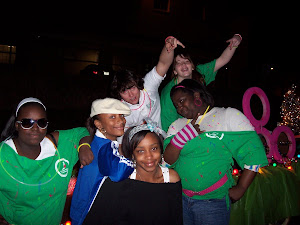Study questions
Chapter 2
Distinguish between the study of anatomy & physiology. Structure of the body parts, study of the function.
Example that shows relationship between structure & function of these body parts. The stomach pouch like shape & ability to expand are suitable to its functions for storing food.
List the levels of organization within the human body in reference to a specific organ. Atoms, molecule, macromolecule, cells, tissue, organs, organ system, and organism.
Distinguish between a midsagittal, transverse, and a frontal cut. Divides body into right & left portions, cuts body into superior & inferior portions, cut body into anterior & posterior portions.
6. Distinguish between dorsal & ventral body cavities, & name two smaller cavities that occur within each. Dorsal can be subdivided into two parts, cranial cavity within the skull contains the brain & spinal cavity contains the spinal cord.
10. Define homeostasis, & explain its importants. The relative contsancy of the bodys internal environment, which is composed of the blood & the tissue fluid that bathes the cells.
Objective questions part IV
Matching organ systems
digestive 24. Stomach
urinary 25. Kidneys
respiratory 20. Lungs
circulatory 21. Heart
reproductive 22.ovaries
nervous 23. Brain
endocrine 19. Thyroid gland
Medical reinforcement exercise
3. Gasterectomy means excision of the stomach
5. Macrocephalus means large skull
6. Transthoracic means across the chest wall
7. Bilateral means two or both sided
9. Dorsalgia means pain in the upper back
10. Endocrinology is the study of the endocrine system (secretion within).
Chapter 4
Study questions
4. Describe the structure & function of endoplasmic reticulum Er. Include the terms smooth ER, rough ER, & ribosomes in your description. Endoplasmic reticulum forms a membranous system of tubular canals that begin at the envelope & branches throughout the cytoplasm. Ribosomes are attached to portions if ribosomes are present its called rough ER if they are not its called smooth ER.
5. Describe the structure & function of the golgi apparatus. Mention vesicles & lysosomes in your description. Packages a product for export, the product is enclosed within a vesicle that moves toward the plasma membrane, where the vesicle discharges its contents. Lysosomes carryout intracllular digestion and digestive enzymes.
6.describe the structure & function of the mitochondria. Mention the energy molecule ATP in your description. Burns glucose products to produce ATP molecule.
8. Contrast passive transport (diffusion, osmosis, filtration) with active transport of molecules across the plasma membrane. Diffusion is passive movement of molecules from an area of lower concentration. Osmosis id the diffusion of water across a plasma membrane. Blood pressure aids matter by pushing water and dissolve solutes of the capillary.
Objective questions
Match the organelles in the key to the functions given.
mitochondria 3. Power house
nucleus 5. Control center
golgi apparatus 1. packaging & secretion
rough ER 4. Protien synthesis
centrioles 2. Cell division
Chapter 5
Study questions
1.What is tissue? Similarly specialized cells that perform a common function in the body.
3. What are the functions of epithelial tissue? Name the different kinds of epithelial tissue, & give a location for each. Forms a continuous layer, or sheet, over the entire body surface and most of the body’s inner cavities, squamous lines the lungs, cuboidal lines the kidneys, & columnar found near the digestive system.
4. What are the functions of connective tissue? Name the different kinds of connective tissue, & given a location for each. Binds structure together provides support & protection, fill space, produces blood cells, & stores fat.
9.Name the different types of body membranes, & associate each type with a particular location in the body. Mucous lines the interior walls of the organs & tubes that open to the outside of the body, serous lines cavities including thoracic & abdominoplvic cavities & internal like the heart , synovial line freely movable joint cavities & composed of connective tissue, cutaneous forms the outer layer of the skin.
Blog Archive
Wednesday, September 5, 2007
Subscribe to:
Post Comments (Atom)



1 comment:
Well done!
Post a Comment